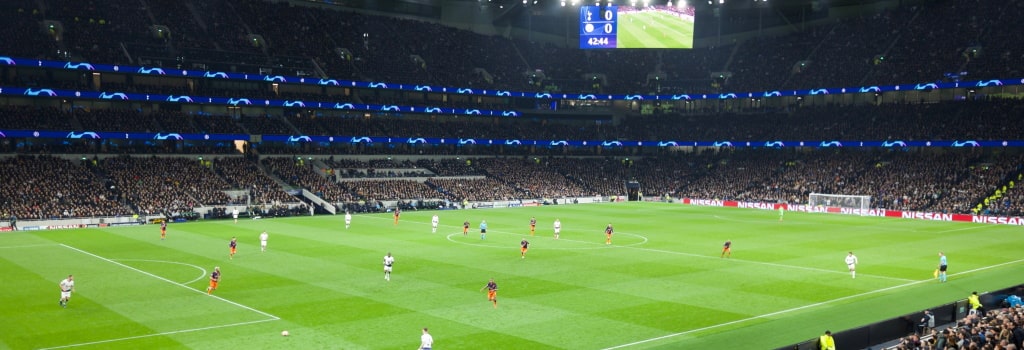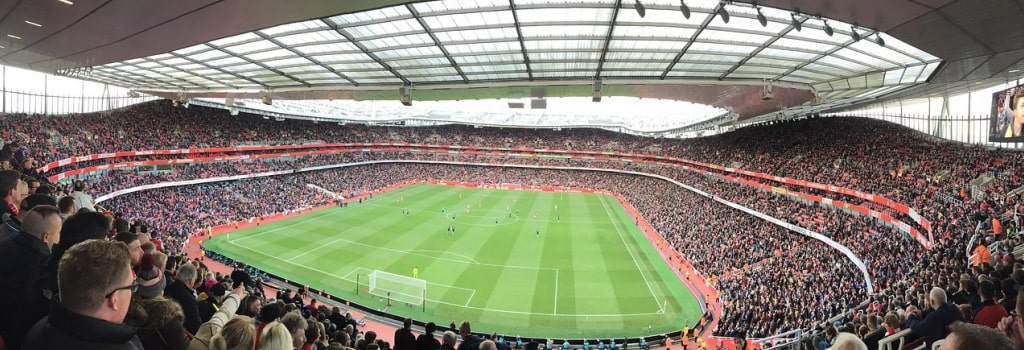

A stadium is an integral piece of a team's identity. Around the world, clubs in leagues like the US's NFL or Australia's NRL can swap home cities and stadiums if there's an economic impetus. But in the Premier League (and throughout most of Europe), it's a taboo.
For this reason, many Premier League teams have long and storied histories with their stomping grounds. Pushes to modernize teams, from the formation of analytics departments to the founding of a Hall of Fame, have left major questions in regard to stadiums. For some, switching stadiums is paramount to swapping cities.
With Anfield's Kop responsible for 'sucking the ball into the net' and Emirates Stadium's hall of statue heroes rallying fans, there's a lot to be said for the power of a home game. Not only does it offer a team an advantage to hear their fans cheer for them, but it's one way fans look to build identity and community around their squad.
However, in recent years, fixture congestion has become an issue in elite football and it has seen many teams spend dizzying stretches of time on the road. For example, Tottenham kicked off their 2020 season with a game in London on Sunday, then one in Bulgaria on Thursday, and then back to the UK the next Sunday.
Such concerns have only deepened the debate on whether clubs like Liverpool, Manchester United, and Chelsea should swap their longstanding stadiums Anfield, Old Trafford, and Stamford Bridge for more updated grounds. Since the Premier League's formation, a total of ten clubs have moved.
Though they've faced opposition and, at best, suspicion from fans, here are a few of the biggest transformations since 1992.
After facing major renovation issues at Highbury, Arsenal officials began a decade-long push to relocate. After briefly considering buying Wembley Stadium, officials instead found a plot in Islington to construct a new stadium.
The four-tiered Emirates Stadium is considered by many to be one of Europe's largest and most impressive football stadiums. From its architectural design to the Arsenalisation of its inner features, it's a modern giant that pays respect to its origins.
Though not everyone feels that way. In a 2020 interview with beIN Sports, former coach Arsene Wenger stated he thought the club left its soul at Highbury. Meanwhile, fans dislike the distance between the stands and the field, as well as prohibitive ticket prices.

Rather than undertake a new construction entirely, the former chairman of West Ham began pushing for a move to London Stadium in 2010. At the time, Upton Park was facing major renovation considerations after serving as the club's home field for 106 years.
West Ham beat out Tottenham Hotspur in their bid to take over the stadium after it hosted the 2012 Summer Olympics. Since moving into London Stadium in 2016, some West Ham fans have criticized the location's multi-functionality; most football clubs are designed for the sport alone.
Others enjoy the stadium for its spaciousness, great seating, state-of-the-art facilities, and great views regardless of tier.
Also known as the City of Manchester Stadium, Man City executives began looking for a new location. Rather than attempt to break ground on a new stadium, the club opted to rent the stadium, which was originally built to host the 2002 Commonwealth Games.
Since 2003, Man City has leased the stadium from the city. Though it's home to the club, the lease agreement opens the stadium to other sporting events, including the 2008 UEFA Cup Final and the 2015 Rugby World Cup. Its current name, Etihad, comes from a 2010 sponsorship deal.
Despite Etihad's tailored seat options, seamless mobile check-in features, and 'flying nannies', fans have nicknamed the stadium 'Emptyhad'. Many fans have been priced out of the experience of attending a live game.
Others are frustrated that head coach Pep Guardiola and executives have leveraged their stadium update to attract attention from UEFA and potentially host games despite the fact that most City fans focus solely on their club's Premier League performance.
23 interesting things to do to pass the time until the football season restarts
My daughter's first ever football match - Orlando City v Atlanta United, August 2019. Written for Izzy to read when she gets old enough. Vamos Orlando
The 91 biggest football stadiums in Europe. From Manchester to Munich, Villa Park to Valencia - each one with a capacity over 40,000
Taking my son to his first football match was one of the best experiences I've had as a father so far. I've written this article for Alex to read when he gets older.
